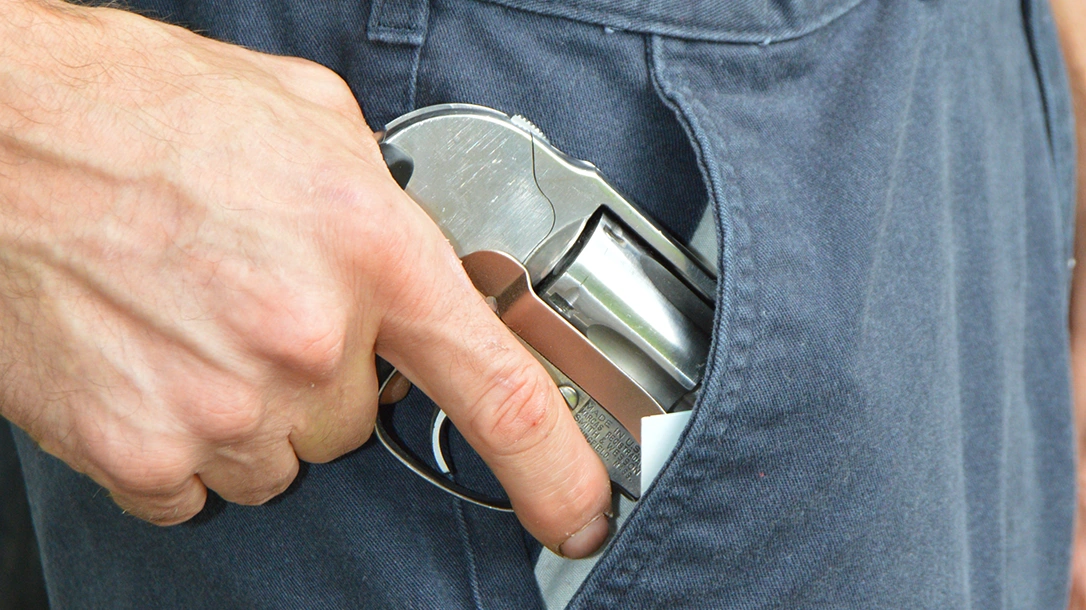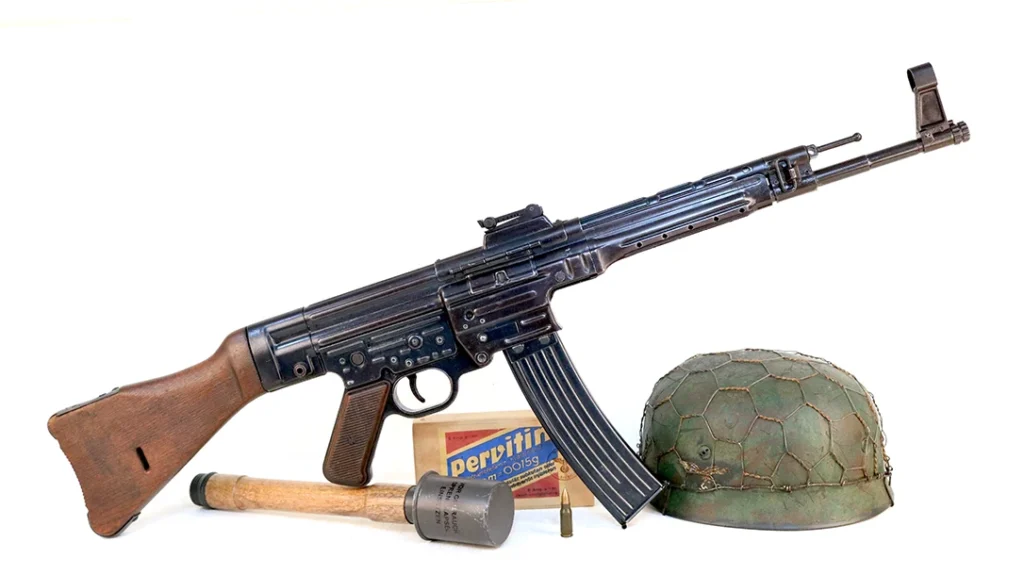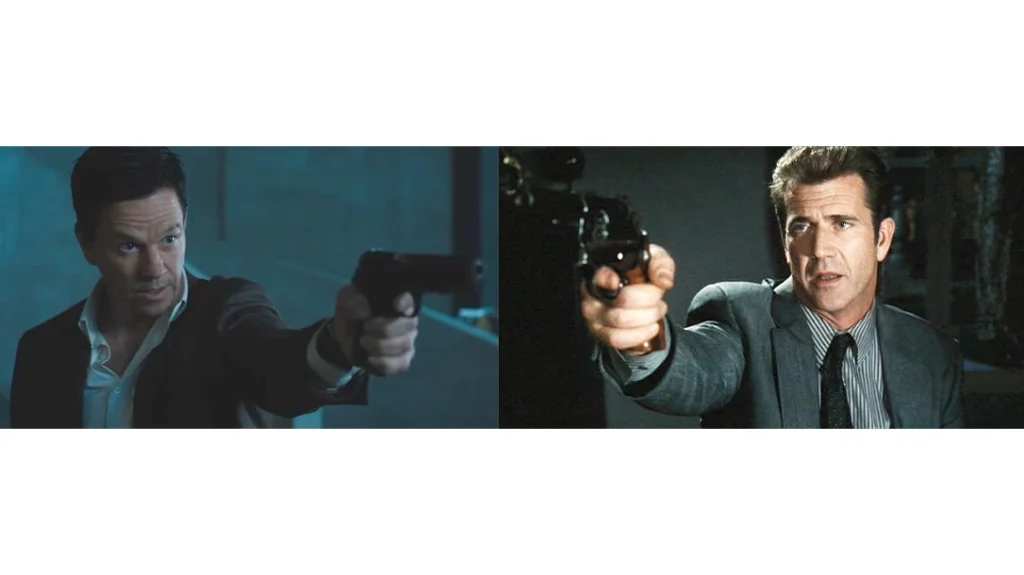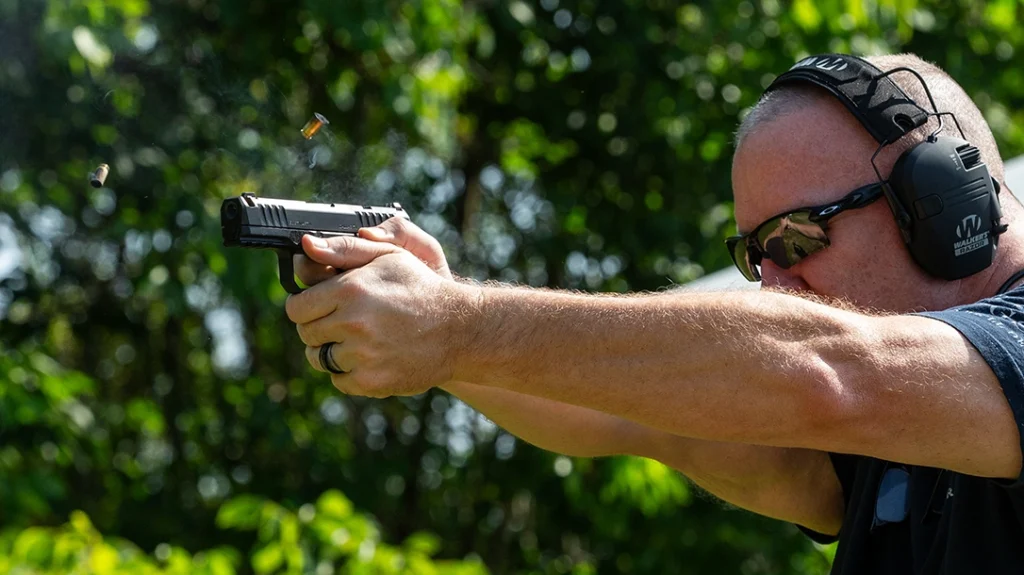I want to start by saying that I have no prejudice against the many fine makers of holsters. However, I have rarely used them in the thirty years that I’ve carried a handgun for personal protection. Some of that is due to a transition into self-employment, and avoiding urban areas. But, the biggest part of it is my lifestyle choices which are increasingly guided by convenience, simplicity and efficiency. So, I often opt for pocket carry, and here are some of the basics I have learned.
The Basics of Pocket Carry: Lessons Learned
I like convenience and simplicity. For example, these days, I leave my neckties knotted. Likewise, unless I’m going to an important meeting or out with my wife somewhere, I don’t bother matching socks.
Rather than spend what time I have left on Earth lashing a holster to my body when there’s no call for carrying a weapon big enough to need it, I’ll slip a more compact handgun into my pocket as I head out the door.
Advertisement — Continue Reading Below
There are pros and cons to this.
The pros are that I always have a gun and spend minimal time arming up.
The downside is that I don’t have a lot of gun; it often isn’t as secure and readily drawn as a holstered gun; and I need to take extra care to insure it doesn’t print through my clothes or otherwise give itself away.
Advertisement — Continue Reading Below
I’m a civilian with no obligation to, or expectation of, using a handgun offensively. My concealed carry gun is my exit strategy to get somewhere where a gunfight, robbery, assault, etc., isn’t happening. I’m sure a lot of practically minded self-defense gun owners feel the same way.
Among the huge number of recent first-time self-defense gun buyers, there are surely many thinking to themselves, “I’ve got the handgun…what else do I really need to protect myself?”
In my opinion, the answer depends on YOUR opinion of your threat environment. Also, consider what it takes to get you to actually CARRY your concealed carry gun ALL the time, so you have it with you when you need it.
Advertisement — Continue Reading Below
With the right (smallish) guns, deep pockets and few good habits, I’ve found pocket carry a good compromise. It keeps me armed at all times when I’m out of the house.

Pocket Carry Considerations
In general, hammerless and concealed hammer handguns were designed to be drawn from the pocket without snagging on your clothing. These are the best choice.
Advertisement — Continue Reading Below
Excessively tall sights and red dot optics create as much, if not more, of a snagging hazard as a long hammer spur. So, you need to forgo them. Compact targeting lasers like the grip or triggerguard mounted types pioneered by Crimson Trace are better options for pocket carry.
Convenience must never trump safety. Your pocket is a terrible place for an accidental discharge! Select a gun suited to safe pocket carry.
For instant readiness there’s the snubnosed double-action revolver or a single-action/double-action autoloader like a Walther PP or PPK. Both have long double-action trigger pulls from 10-13 pounds. That’s their built-in passive safety.
Advertisement — Continue Reading Below
Somewhat slower to deploy are single-action or striker fired autoloaders with a reliable, manual, safety lever that requires deliberate disengagement. They can be carried with a round chambered ready to fire as soon as the safety is disengaged.
The speed that you can operate the safety is the limiting factor. Surprisingly, even the old fashioned styles with levers that swing through 180 degree arcs can be worked quickly with practice. Often right inside the pocket.
I would not pocket carry a modern striker fired pistol with a round chambered if it lacked a manual safety. Their short, light, trigger pulls invite accidental discharge on the draw. If you must carry one, do so with an empty chamber, Israeli style, and rack the slide on the draw.
Advertisement — Continue Reading Below
A Focus on Convenience and Deep Concealment
Pocket carry is more about convenience and deep concealment than it is about speed. Consistent situational awareness is a good habit to maintain that will serve you well when your draw is more complex and you need an early warning to prepare.
One advantage of pocket carry is that if there is a perceived threat, I can slip my hand in my pocket and inconspicuously grip my gun. Perhaps even with the safety switched off if I think the trouble may be imminent.
To the casual observer, I’m just a guy walking with his hand in his pocket. That’s nothing to get good citizens alarmed about. In contrast, reaching to a waistband holster is likely to attract unwanted attention. Likewise, drawing your handgun could get you charged with brandishing.
Advertisement — Continue Reading Below
Pants or Jacket?
For pocket carry to work, you have to like wearing clothes with suitably roomy hip pockets. Because I want constant control of my pistol while carrying it, I prefer pants pocket carry to coat pocket carry. I never leave the house without pants on and usually don’t take them off until I get back home.
Unlike a jacket, there’s no way to forget your gun laden pants at a restaurant. Nor does the host of a party customarily take your pants to hang them in the closet until you leave.
Picking the Right Pocket
The hip pocket needs to be deep enough to keep the handgun out of sight. Likewise, it must be roomy enough to allow an easy draw, and sturdy enough to support the gun’s weight.
Advertisement — Continue Reading Below
The waistband must fit well enough to support the weapon’s weight. Or, expect to wear a belt or suspenders to keep your pants from sagging down on the pistol side.
With typical, comfortably cut, men’s dress and work pants, pocket engineering is fine. I have also pocket carried with denim jeans. However, the snugger fit makes them a bit uncomfortable, makes drawing more difficult, and requires extraordinary care to avoid printing.

Jeans work better with little vest pocket .25 autos than anything else. Those really small .25 ACP guns can often be carried quite discretely in the button-down flap chest pockets of a heavy winter shirt.
Pants with unusually thin pocket linings can be reinforced to prevent your handgun from wearing a hole through them. Simply add a layer of cotton duck or similar sturdy cloth. This will last the lifespan of the garment but requires a little basic sewing skill.
Thigh cargo pockets are a poor choice for pocket carry because they are usually too low on the leg. Not to mention, too baggy to support a handgun upright. Using them risks your gun falling out every time you sit down or climb.
Pocket Carry Prep
To avoid an accidental discharge disaster and make drawing your pistol more efficient, devote a pocket exclusively to your handgun. When you pocket carry, the designated pocket holds your gun and nothing else.
Better yet, get into the habit of putting your keys, breath mints, handkerchief, pocket knife, etc., in other pockets. This helps ensure that you never accidentally put them in your gun pocket. Or worse, absentmindedly go digging for them in your gun pocket and cause an accidental discharge.
Placing a piece of tape over the muzzle of your handgun will keep pocket detritus from getting into the barrel.
Don’t go crazy with the gun oil since it will get absorbed by your clothes and leave an oil stain. That’s not a big deal with my shop clothes. But I got tired of my wife raising hell about ruining my dress pants. So, my pocket guns are carried nearly dry.
In hot, humid, weather, your sweat is more likely to rust a carbon steel gun than a stainless one. However, both types should be wiped dry after a day’s carry.
There is an easy, cheap and effective way to prevent printing and make your pocket carry handgun easier to draw.
First, insert a tri-fold brochure into your pocket and place your pistol behind it. These tri-fold brochures are found in abundance at highway rest stops and motel lobbies. The stiff paper they’re made from acts like a pocket liner. This holds the cloth away from your handgun and hand, thus reducing obstacles during your draw.

To the world, it looks like you just have some brochures in your pocket. I’ve had them last about a week in daily carry before they needed replacement.

Pocket Holster Selection
Most pocket holsters do a decent job of keeping your handgun oriented with the grip up and easier to grasp. However, they don’t seem to do enough to break up the gun’s outline so it looks like something other than a holstered gun in your pocket. Sometimes the holster pulls out of the pocket with the pistol during the draw, too.
The later problem can be addressed by sewing some small snaps, or a button to the bottom of the holster to secure it to the pocket. In my experience, this worked more reliably than sticky type pocket holsters designed to “grab” your pocket lining.
With the resurgence in pocket carry sized guns, like the excellent .380 ACP S&W Bodyguard 2.0, I recently tested, we are also seeing holster makers revisiting pocket holsters, too.

Talon Holsters and DeSantis make designs, in leather and Super Fly sticky nylon, respectively, that I think are near ideal. They are an improved version of the traditional style, which was characterized by a formed pocket for the pistol sewn onto a rectangular backing against the hip to stabilize it in the pocket.
These traditional holsters always seemed flawed to me because they didn’t stop the handgun from printing through the pocket. Talon and DeSantis improved the design by switching the rectangular backing to the outside. As a result, it completely masks the shape of the gun. I might get one if I ever run out of tri-fold brochures.
For more information, please visit TalonHolsters.com and DeSantisHolster.com.

























